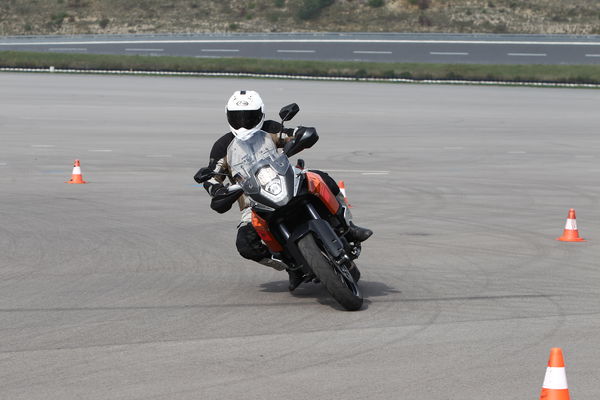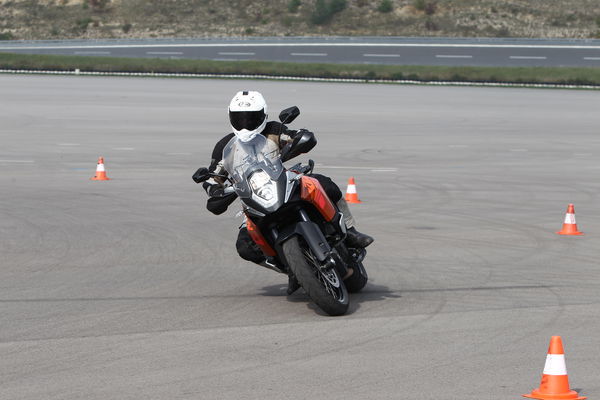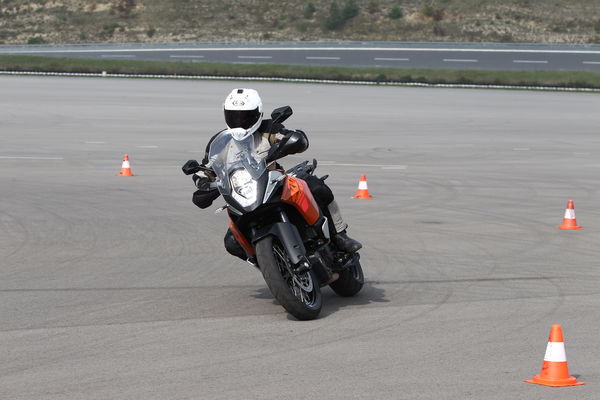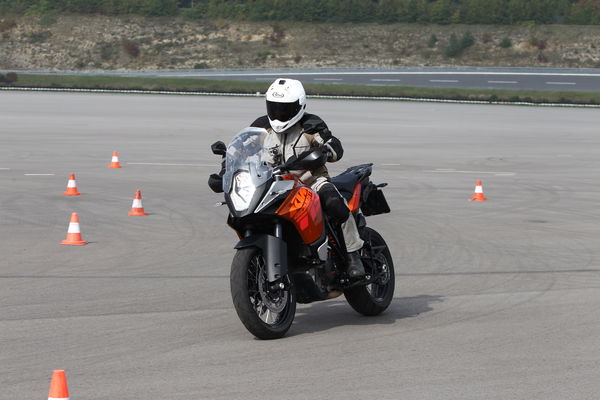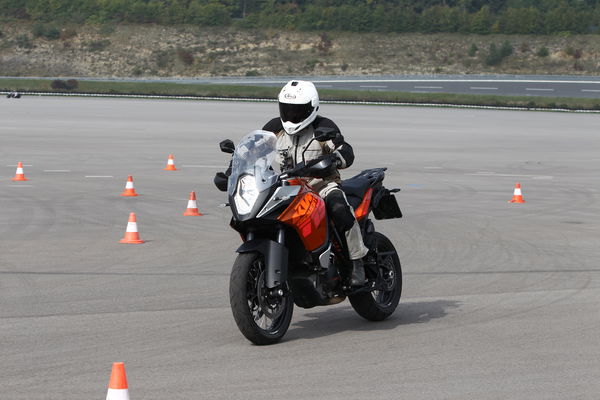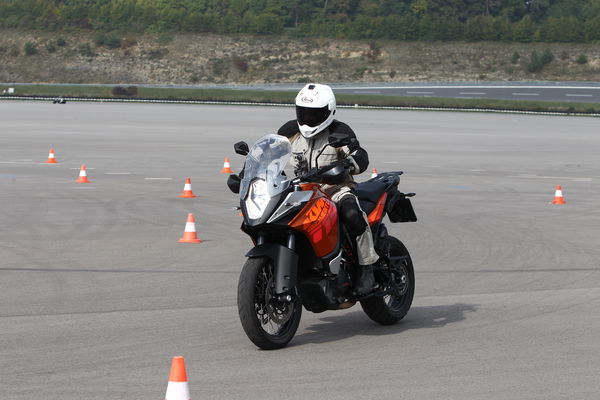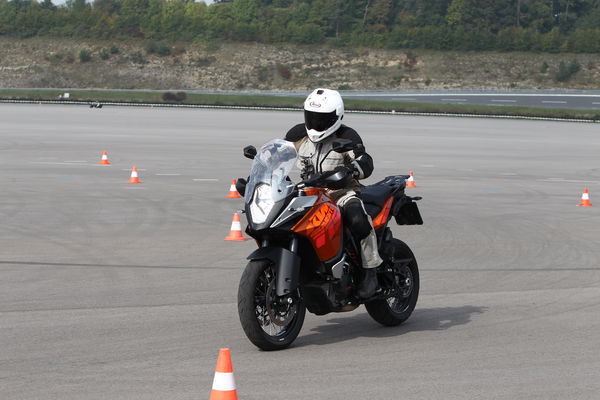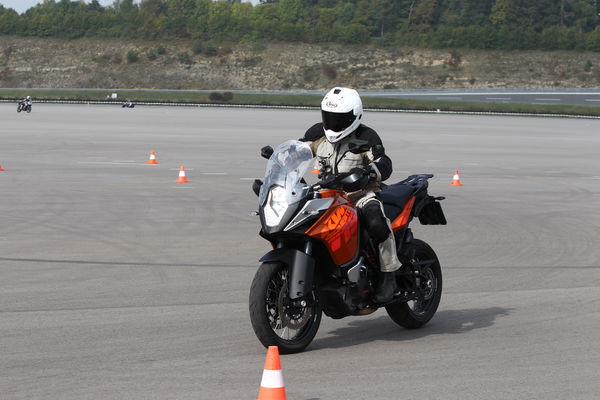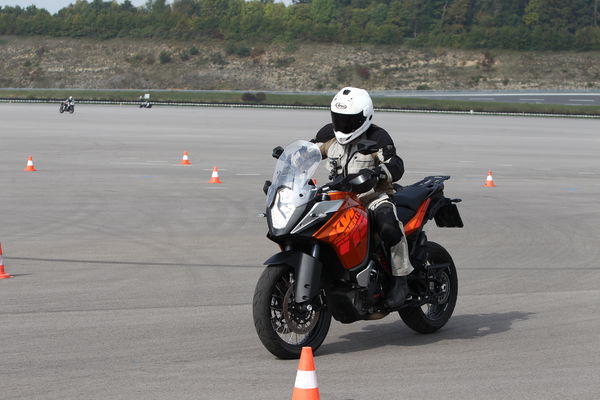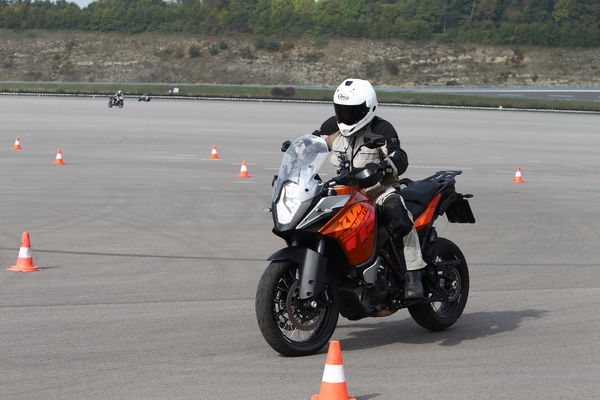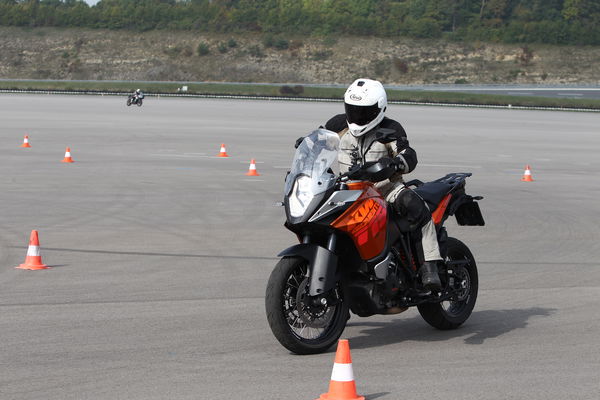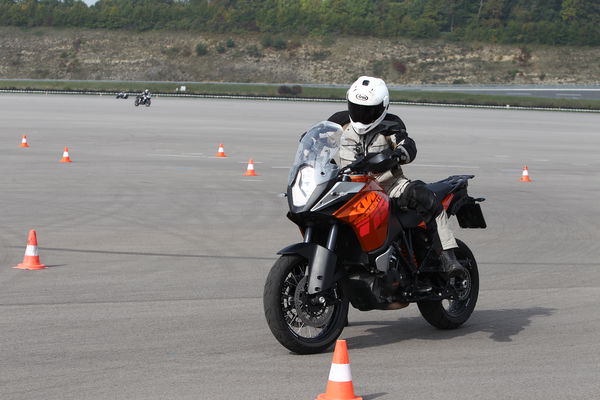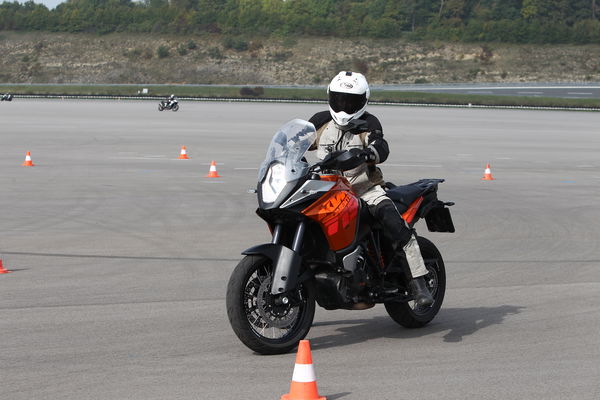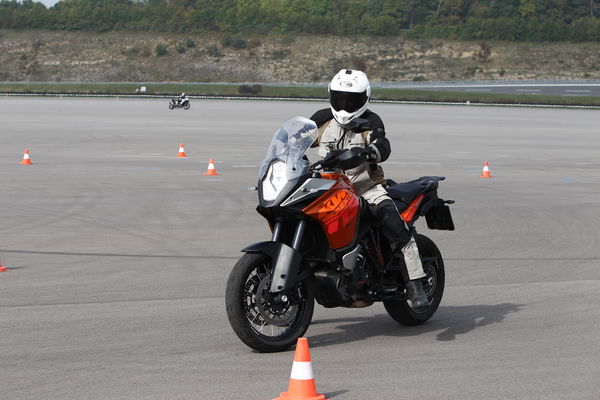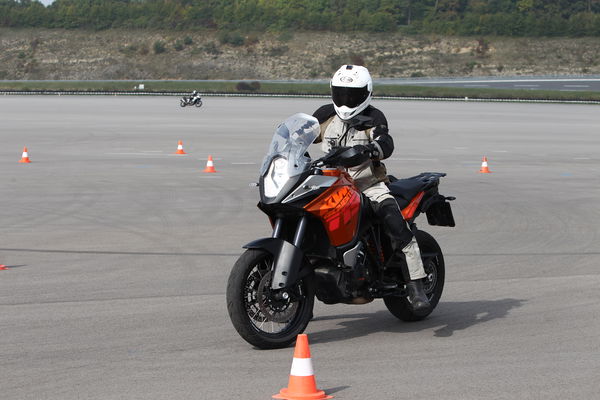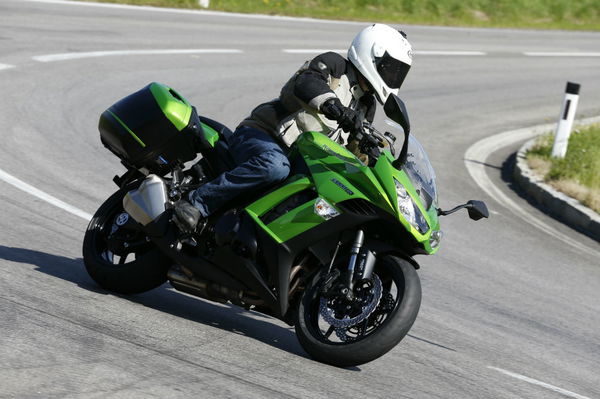First Ride: KTM 1190 Adventure with cornering ABS
Bad news for the electronics-averse: Bosch’s new Motorcycle Stability Control is amazing
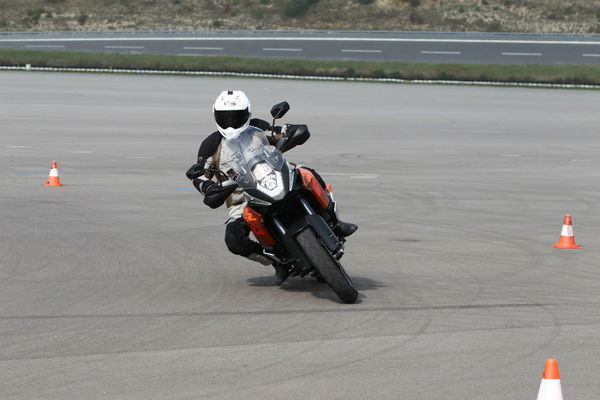

IF you’re one of that group of motorcyclists who object to electronic rider aids, I’ve got bad news for you.
I’ve just tested KTM’s 2014-spec 1190 Adventure, with Bosch’s new ‘MSC’ Motorcycle Stability Control system. I predict something similar will be on many production motorcycles within a few years, and eventually all of them. If not, it should be. It’s amazing.
Motorcyclist derive self-esteem from their riding skill, so some will naturally feel threatened by the offer of help. You might also derive self-esteem from looking after your family. You don’t chuck out the smoke alarms and sit up all night sniffing the air.
Apart from anything else, smoke alarms are better at detecting fire than you. Unless you’re faster than John McGuinness, who uses ABS in the wet on his Honda TT Legends Fireblade, decent rider aids are likely to be better than you too.
Bosch’s MSC is hailed as the first effective cornering ABS system.
As you may know, in a corner, your front tyre endures most of the stress of keeping you both on your chosen trajectory and the right way up. Over-burden it with braking and it will stop doing both. It will twist and slide – or tuck – and you will crash. And it will happen so fast there will be nothing you or ABS can do about it.
Until now. I won’t dwell for long on a technological explanation of how Bosch MSC works because (a) I spent ages talking to the engineers and still didn’t understand and (b) I think it’s boring.
The non-boring summary is this: sensors measuring lean-angle, pitch and braking pressure allow it to intervene in time to prevent the kind of crash described above. By altering the distribution of braking force to the front and rear wheels, it also reduces the tendency of the bike to stand up and go straight on, perhaps into a field.
The important point is this: It works.
Before letting us try it at their secretive test facility in Boxberg, Germany, Bosch engineers faced scepticism and befuddlement from journalists. Cornering as fast as we dared, we could brake as hard as possible, and the bike would stop without changing line, they told us.
Before they'd got into an explanation of how they had achieved this, we were struggling to envisage exactly what they had achieved. Would the bike stand up? How could it without going straight on? And if it didn’t, wouldn’t we drop it? Doubts were also raised that we would have the faith to fully test it. Blame was apportioned for notional crashes.
When it came to it, finding the faith to brake hard mid-corner was easy. First we tried the 1190 Adventure’s ABS in a straight line, on cobbles. I jammed on the front as hard as I could. The tyre skipped about a bit, squealed a bit, and stopped the bike far more quickly than I could have done. It was confidence inspiring.
So when it was my turn to try the cornering ABS, following a circular dotted line around a wide, open area of the test facility, I did exactly what they’d said, by braking as hard as possible while banked over. I used only the front, because I’m in the bad habit of doing so on the road, and anyway the system is supposed to take care of braking distribution. The bike stood up and stopped, seemingly in an instant, without changing trajectory.
I tried again. I heard momentary tyre squeal. The front seemed to snatch to one side for a barely perceptible instant and then recover. It should have been a crash. Instead I stopped, safely and upright, without leaving my hypothetical lane.
The next time my toe scraped the ground before I braked, again as hard as I could, and the finish was the same. I tried both brakes and it still worked, possibly with more composure. I tried stamping on the back. Instead of going completely sideways, it stopped more slowly.
Bosch had been keen to point out that no system is fool-proof, and they can’t change the laws of physics. I was beginning to wonder about that.
No matter how skilled you are, the dynamics of braking mid-corner are (or were) an inherent hazard to motorcycling. When I was learning to ride, 25 years ago, an instructor told me never to do it. I asked: “What if you have to do an emergency stop, on a roundabout for example?”
“That’s a bit like saying what if you fall out of an aeroplane without a parachute,” he said. “You don’t put yourself in that position.”
I thought, but didn’t say: No it’s not. By definition, you cannot anticipate an emergency stop. You do not know the answer.
Now the answer can be: Hit the brakes as hard as you can.
It’s not just in an emergency stop that the system could help. In May, I went on a ride with a group of advanced instructors and their students. I won’t name the group, because it adds little. Two of the students had preventable crashes by going straight on at corners. I could see what had happened and I’m sure you can imagine it too. They thought they had overcooked it, so they panicked and braked, enough to make the bike stand up and take a straight line. One of them was lucky to pass between two trees into a field.
It’s a common accident and I don’t believe the rider who says he’s never had the panicky thought: should I try to get round or brake now? I won’t say Bosch’s MSC is a cure because there may be an element of target fixation involved, but it would definitely give riders a better chance of avoiding ditches. It makes braking in corners more like braking in a straight line.
It caught me out at one point. The bike stopped so quickly I didn’t quite have it upright in time, and had to get a leg out quickly to save it. You may be able to see this happening in the sequence of photos. Bosch engineers had mentioned the possibility. It’s infinitely preferable to crossing the road into an oncoming car.
KTM’s PR Manager, Thomas Kuttruf, says Bosch is working on a stability control system with Ducati, and that he expects it could be on competitors' bikes within a year. I wouldn’t be surprised if we see an MSC-equipped Ducati at the Milan bike show in November.
I hope we do. The 2014 1190 Adventure is one of the most impressive motorcycles I have ever ridden. It already has an astounding traction control system, keeping 148hp from the 1195cc V-twin in check with constant, infinitesimal adjustments. On those cobbles, I rode in way I never could relying only on my own skill, with the back stepping out one way and then another, taming the explosive acceleration with perfect precision. If a bike can let you experience that, why wouldn’t you want to?
After the circuit tests, we went for a brisk blast on the road, led by Kuttruf. The traction control already allowed you to take liberties coming out of corners. The MSC now provided extra confidence going in.
If your cornering speed is beyond the limits of the tyres, of course MSC can’t prevent you interfacing with the hedge. But if, for whatever reason, you need to brake hard mid-turn, it can.
Model tested: 2014 KTM 1190 Adventure with Bosch MSC
Price: £13,799 (£12,999 without MSC or electronic suspension adjustment)
Colours: Orange, grey
See an example of where this system would have helped, click here.

